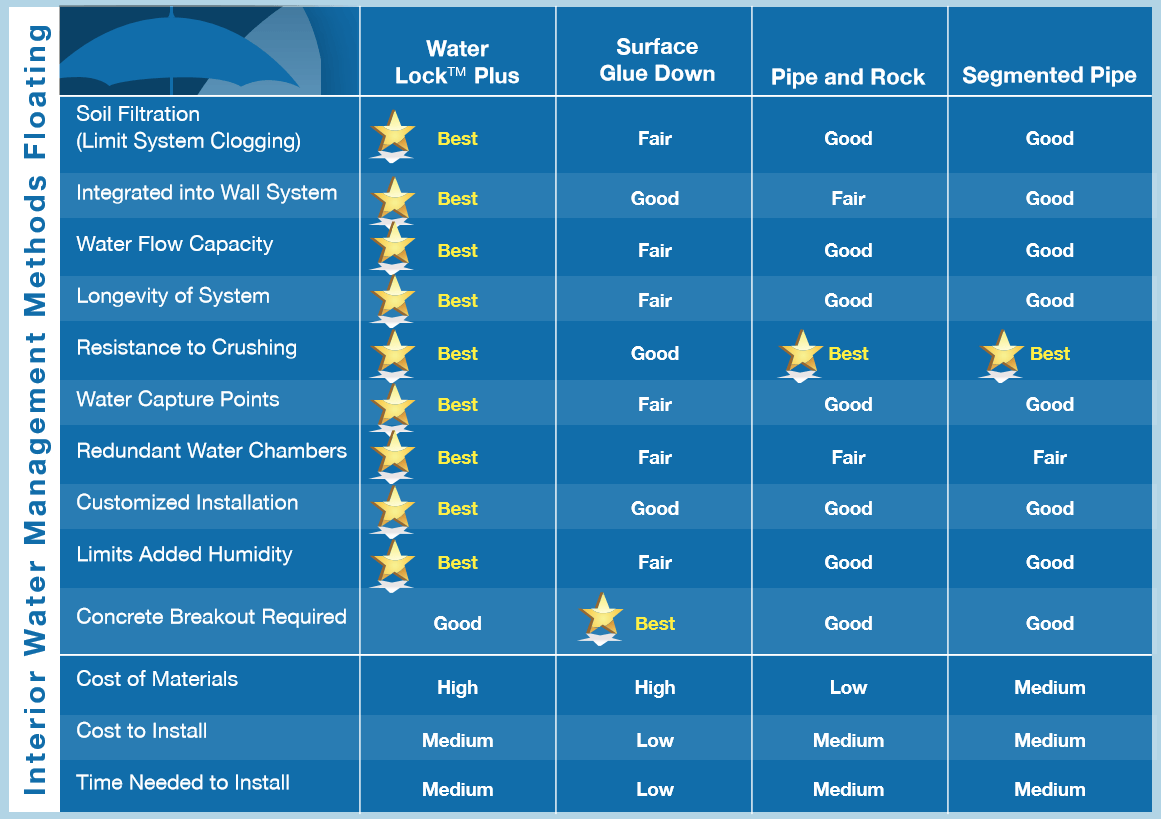We’ve Got a “Lock” On It.
Older processes just can’t compare. Today, if your basement waterproofing contractor is not using the Water Lock™ Plus System, you (and your home) are throwing your hard–earned money “down the drain.”
Other Waterproofing Methods
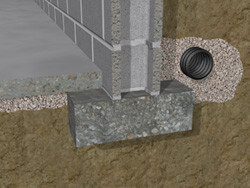
Pre–Construction System

Pre–Construction System
Typically installed by a builder during construction, this system easily clogs.
Advantages
- System is installed by builder during construction
Disadvantages
- System sits beside the footer in the dirt and can easily clog
- Usually clogs over time
- Pipe is sometimes crushed and discharge is covered during construction
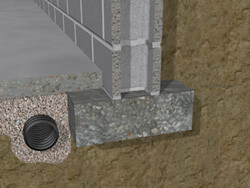
Pipe and Rock Method

Pipe and Rock Method
This option uses gravel as a filter. But pipe may collapse. Water capacity and clogging are flaws in the system.
Advantages
- Added gravel serves as filter
- Materials used are inexpensive and readily available
Disadvantages
- System sits beside the footer and can easily clog
- Slits in the pipe may not be large enough to accommodate excessive amounts of water
- Pipe can crush or collapse
- Excessive amounts of concrete may be removed for installation, 12” – 24”
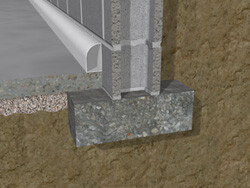
Glue Down Method

Glue Down Method
Advantages
- Concrete removal is not required, quick to install
Disadvantages
- The cost of the system is not relative to the product or its performance
- Water must enter the home before the system activates
- The system cannot handle large volume water flow
- The bond to the floor can loosen over time
- Water continues to wick up the wall
- The open system allows water to stagnate and contributes to higher humidity
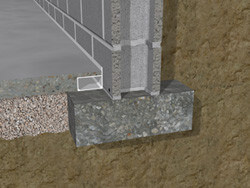
Segmented Pipe Method

Segmented Pipe Method
Advantages
- It sits on top of the footer away from dirt
- Requires less concrete breakout
Disadvantages
- Gravel used may eventually clog the system
- Large amounts of water may overtake the system
- ¾ of the pipe is closed to water entry
- Some segmented pipe can cause clogging or may leak
- Most are all one–chamber systems; no redundancy
Pre–Construction Drainage System
Typically installed by a builder during construction, this system easily clogs.
Advantages
- System is installed by builder during construction
Disadvantages
- System sits beside the footer in the dirt and can easily clog
- Usually clogs over time
- Pipe is sometimes crushed and discharge is covered during construction
Pipe and Rock Method
This option uses gravel as a filter. But pipe may collapse. Water capacity and clogging are flaws in the system.
Advantages
- Added gravel serves as filter
- Materials used are inexpensive and readily available
Disadvantages
- System sits beside the footer and can easily clog
- Slits in the pipe may not be large enough to accommodate excessive amounts of water
- Pipe can crush or collapse
- Excessive amounts of concrete may be removed for installation, 12” – 24”
Glue Down Method
Advantages
- Concrete removal is not required, quick to install
Disadvantages
- The cost of the system is not relative to the product or its performance
- Water must enter the home before the system activates
- The system cannot handle large volume water flow
- The bond to the floor can loosen over time
- Water continues to wick up the wall
- The open system allows water to stagnate and contributes to higher humidity
Segmented Pipe Method
Advantages
- It sits on top of the footer away from dirt
- Requires less concrete breakout
Disadvantages
- Gravel used may eventually clog the system
- Large amounts of water may overtake the system
- ¾ of the pipe is closed to water entry
- Some segmented pipe can cause clogging or may leak
- Most are all one–chamber systems; no redundancy

